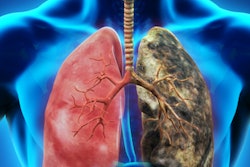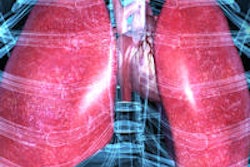It's the ultimate irony: The success of public health efforts to get people to stop smoking is resulting in fewer individuals being eligible for CT lung cancer screening. In fact, some people are continuing to smoke just to be eligible for CT scans, according to new research in the Journal of the American Medical Association.
In a research study focused on a county in Minnesota, the percentage of patients presenting with primary lung cancer who would have qualified for CT screening under current guidelines from the U.S. Preventive Services Task Force (USPSTF) declined from 57% in 1984-1990 to 43% in 2005-2011, wrote lead author Dr. Yi Wang and colleagues from the Mayo Clinic in Rochester, MN.
As a result, researchers and policymakers will need to re-examine CT screening criteria to identify a greater proportion of patients who develop lung cancer.
"The existing screening program will become less effective at reducing lung cancer mortality in the general population, if they continue to use the same criteria," said senior author Dr. Ping Yang, PhD, in a statement from the Mayo Clinic.
Who should be screened?
Lung cancer screening with low-dose CT is recommended for individuals at high risk by dozens of professional associations, including USPSTF, the American College of Chest Physicians, the American Cancer Society, the American College of Radiology, and the Society of Thoracic Surgeons. But there has been much debate over exactly who should be considered eligible for screening.
The current study examined the screening criteria from USPSTF -- specifically, that CT screening should be reserved for high-risk smokers or former smokers ages 55 to 80 years with at least a 30-pack-year history of smoking. The researchers investigated a defined population retrospectively over 28 years to show trends in the proportion of patients with lung cancer who met the criteria for screening (JAMA, February 24, 2015, Vol. 313:8, pp. 853-855).
The cohort included everyone residing in Olmsted County, MN, older than age 20 from 1984 to 2011, totaling about 140,000 people. The Rochester Epidemiology Project database was used to identify all pathologically confirmed incident cases of primary lung cancer, with diagnosis based on the International Classification of Diseases.
Data adjusted for the age and sex distribution of the U.S. population in 2000 were also used to assess lung cancer incidence. Cases were divided into seven-year intervals to minimize annual rate fluctuations.
Based on this information, the researchers identified the proportion of lung cancer patients who would have been eligible for screening based on the USPSTF criteria. They found that the percentage of these patients fell significantly over the study period, from 56.8% in 1984-1990 to 43.3% in 2005-2011 (p < 0.001).
The change wasn't uniform between men and women: The proportion of women who would have been eligible decreased from 52.3% to 36.6% for the same time periods (p = 0.005), while the proportion of men decreased from 60.0% to 49.7% (p = 0.03).
Despite the declining eligibility rates, the researchers found that lung cancer remains a killer. The study revealed 1,351 patients (mean age, 68.1 years; 55% male) with incident primary lung cancer diagnosed between 1984 and 2011. The age- and sex-adjusted lung cancer incidence rate dropped from 52.3 per 100,000 person-years in 1984-1990 to 44.1 person-years in 2005-2011 (p < 0.001). Trend analyses showed a decline in cancer incidence in men but not women, the authors noted.
Declining smoking rates
What's causing the decline in eligibility? Ironically, it appears to be the success of public health efforts in persuading people to stop smoking.
The proportion of lung cancer patients who smoked at least 30 pack-years declined over the study period from 86.6% to 80.5% (p < 0.001). And the proportion of cancer patients who had quit for more than 15 years before their diagnosis increased from 30.6% in the 1984-1990 period to 38.3% in the 2005-2011 time frame (p < 0.001).
"While more people have quit for a longer period of time, they are still getting lung cancer, and they make up a larger proportion of newly diagnosed lung cancer patients," Yang said.
Being ineligible for screening has important consequences, Yang added. Instead of benefiting from early detection, more patients will be diagnosed with a later stage of lung cancer, increasing mortality rates.
Yang said she hopes to see screening criteria adjusted to include smokers with less than 30 pack-years of history, as well as those who quit smoking more than 15 years ago.
"We don't want to penalize people who succeeded in smoking cessation," she said, adding that she is aware of many smokers who are cancer-free but continue to smoke in order to be eligible for CT screening.
Finally, CT screening will become less and less effective unless screening criteria are revised to include more patients who are likely to develop cancer, Yang said.
She acknowledged that there is a danger in relaxing CT screening criteria too much and thereby raising concerns about cost, radiation exposure, and overtreatment due to false positives.
"There are ways to screen at-risk patients while still avoiding false alarms and overtreatment," Yang said. "Researchers need to discover biological markers, such as genetic or physiological traits, to help them better identify high-risk patients."




















